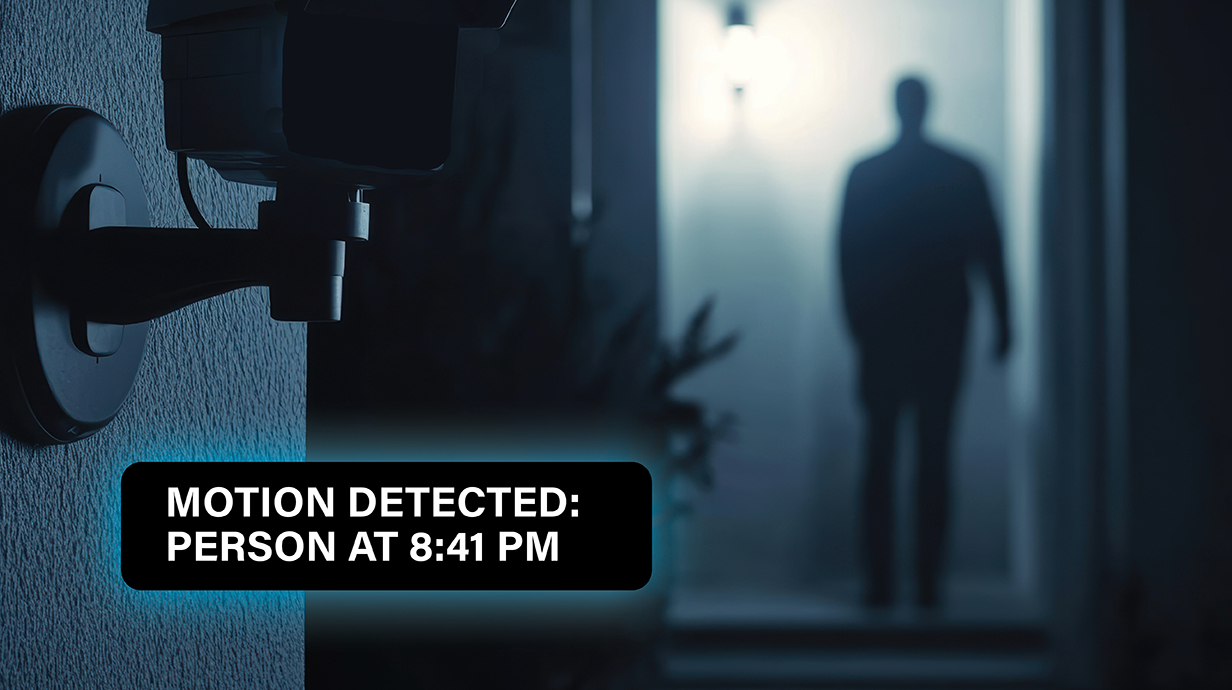News You Can Use: Shining a Light on Home Security Cameras
UM researcher offers tips on choosing cameras to keep your property safer, even at night

OXFORD, Miss. – From autonomous driving to personal health monitoring, AI-powered vision systems are transforming how machines understand human behavior.
At the University of Mississippi, Hawk Bo Wang, assistant professor of computer and information science, studies how to make these systems more robust in challenging conditions, especially in low-visibility environments. While his work spans a range of applications, one relatable example is home security cameras, which often face similar challenges at night.
While they can make a big difference in keeping your home and community safe, some models on the market still have blind spots that can leave users in the dark.
Studies show that parking lots with CCTV cameras saw a 51% drop in crime, and homes with security cameras are 300% less likely to be burglarized. But when the sun goes down or the lights go out, some cameras can struggle with trying to monitor areas, said Wang.
"Many security cameras today come with built-in night vision, usually powered by infrared sensors," Wang said. "When it's dark, these cameras switch from regular color video to grayscale infrared to help users see basic shapes and motion. In perfect darkness, it can work reasonably well."
The problem is that real-world lighting is rarely perfect, he said. Early mornings, late evenings or areas near streetlights and headlights can create uneven lighting that confuses the camera.
"This can force cameras to stay in color mode when they shouldn't, resulting in grainy, low-quality footage that's hard for both humans and AI systems to interpret," Wang said. "On top of that, glare from car headlights or reflective surfaces can temporarily blind the sensors, and intruders who understand this might even exploit it."
That's why researchers like Wang are working on AI-powered solutions that don't rely on specialized hardware. His team is developing computer vision models that can handle tricky, low-light conditions using just standard cameras, no expensive upgrades required.
"By improving the software, we can make smarter, more dependable AI-powered vision systems available to a broader public," Wang says. While the technology continues to improve, there are steps homeowners can take right now to make smarter choices. Wang shared a few tips for choosing effective home security cameras:
- Look for infrared night vision and built-in lights. Many cameras include IR night vision for complete darkness, but in dim or mixed lighting – such as near streetlights or at dusk – IR may not activate. Devices with built-in lights that turn on manually or via motion detection can improve visibility in low-light settings where IR may not work as intended
- Consider AI-powered features such as human motion detection. AI systems can help reduce false alarms by distinguishing between people, animals or other movements. Look for devices with customizable alerts or privacy zones so you can tailor detection to ignore areas such as sidewalks or neighboring driveways.
- Understand video storage and data privacy. Some cameras store footage locally – on an SD card or base station, while others upload it to the cloud. Know the trade-offs in privacy and security to choose what fits your comfort level.
- Be aware of lighting limitations. Cameras often struggle in marginal lighting conditions where it's too dim for clear color video but not dark enough to trigger IR. While no system handles these perfectly, being mindful of how different devices perform can help make a more informed choice.
With smarter tools and a few strategic choices, homeowners can make sure their cameras are ready to capture clear, useful footage, day or night.
"AI-powered vision systems are rapidly advancing, and we're moving toward a future where these systems do more than just see in the dark," Wang said. "They'll be able to understand what they're seeing.
"This means going beyond simple motion detection to recognizing specific human activities, identifying potential threats or emergencies, and adapting to complex environments in real time."
This technology could lead to home security systems that not only detect someone on your property at night but also distinguish between a neighbor walking their dog and an unusual movement that might indicate a break-in.
For consumers, the best way to prepare is to stay informed," Wang said.
"As AI technology becomes more common in home devices, it's important to understand what these systems are capable of, how they work and how your data is being used."
Top: Security cameras can add a level of safety around homes and other properties, but some work better than others in low-light conditions. An Ole Miss researcher offers some tips on choosing the best camera for your property and conditions. Photo illustration by Stefanie Goodwiller/University Marketing and Communications
By
Jordan Karnbach
Campus
Office, Department or Center
Published
June 12, 2025
